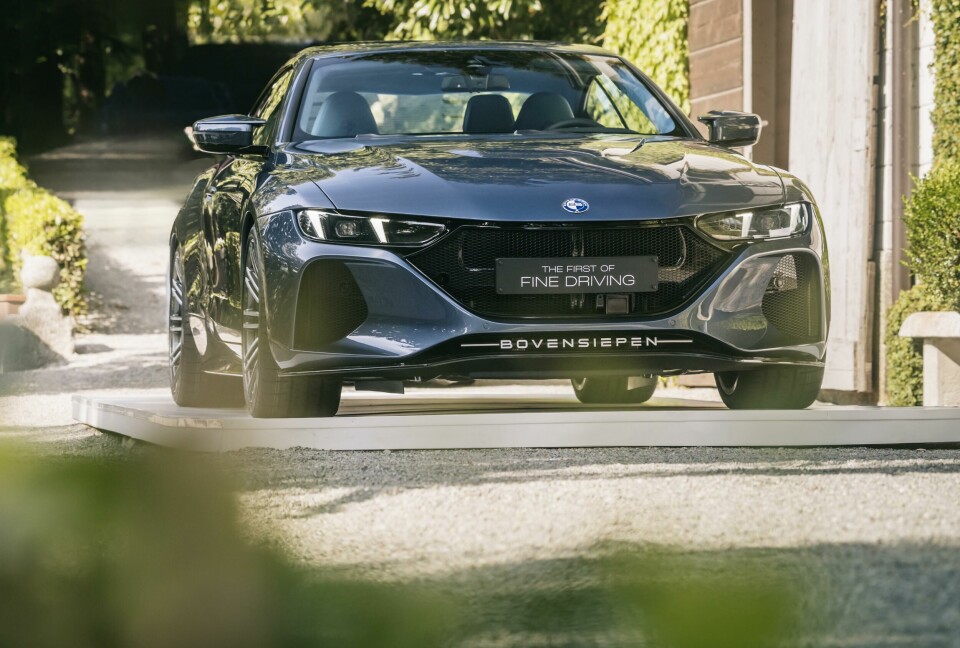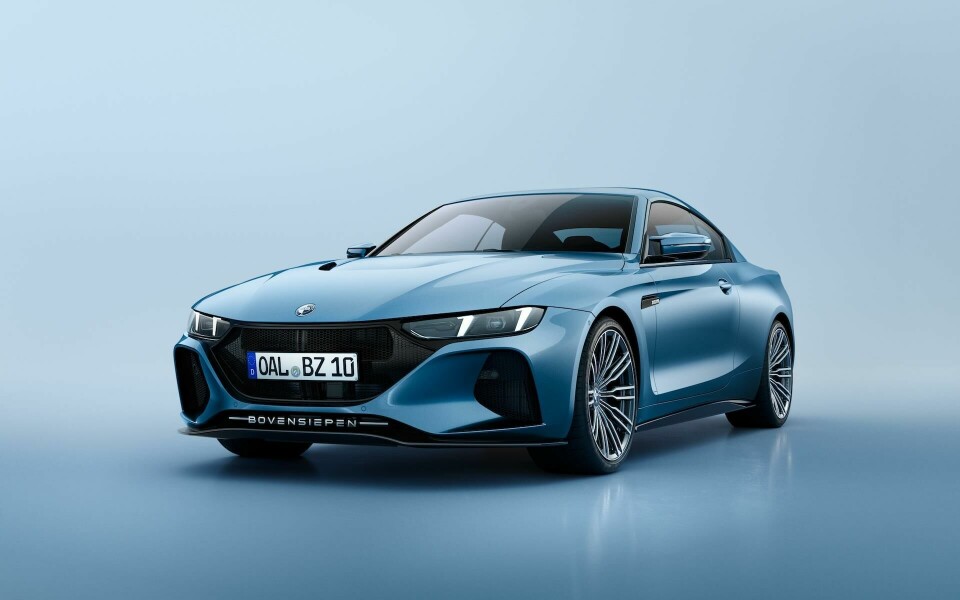New-look Alpina?

“Fine driving” meets fine design with the Bovensiepen Zagato
The Bovensiepen name is already famous many times over for its ties to Alpina, the famous BMW modification outfit from Buchloe, Germany. Now, the family name has been elevated to the front of the bonnet, not just on a plaque in the cockpit
Although the press release does well to avoid mention of the A-word, there is no escaping the links to a brand with half a century of design excellence under its belt. Indeed, the new Bovensiepen brand clearly intends to position itself separately to Alpina, founded by the same family name in 1965. The Zagato coupe, revealed at the 2025 Fuori Concorso in Italy, is its first model.
Designed in Italy via Zagato (but still made in Buchloe, just like Alpinas are) it does share many traits one would associate with Alpina: an accomplished grand tourer, oodles of torque and power, classy design and elevated luxury. It is perhaps this last element that truly separates Bovensiepen, firmly moving into luxury and beyond performance-premium. “We [are] bringing together the DNA of two families,” says third-generation Zagato president Andrea Zagato. “When you combine two DNAs, the result should be stronger.”
This thinking chimes well with the word from up top, with Andreas and Florian Bovensiepen adopting the phrase “fine driving” as the company mantra.

The luxury approach is perhaps most obvious on the inside. In reveal spec, passengers are bathed in a sea of sky blue almost reminscent of 60s Americana – think Pontiac Bonneville, C2 Corvette or Coupe DeVille – but executed to a finish that would befit the car’s 250+ hour build time.
The colour wash is broken by carbon-fibre panels, brushed metal trim and darker navy trim for the floor and upper IP; the steering wheel gets the same treatment with contrast bright blue stitching. The Bovensiepen logo is embroidered on the headrest and on a metal plaque mounted on the centre console, because of course it is, but also on the plush boot floor which is soft touch right up to the rubber seal. No scratchy plastic here.
Anything carrying the Zagato moniker needs to make an impression; there is no pleasing the masses. That being said, the overall design is rather restrained for Zagato with clean surfacing and subtle front and rear splitters. For any other car, of course, we would perhaps describe this as aggressive, sculptural and in some views, audacious.
The rear three quarter reveals a complex line that runs from the corner of the lower mask, rising upwards and around the tail lamps and across to the back of the boot lid spoiler, before completing the same trip down to the opposite corner. It creates a kind of cut-out section on each side that gives the impression of a mantling bird, holstering its wings before flight.
The multi-spoke wheel design is sure to kick off a legacy of its own with a strong tuning-fork design; in a nod to the success of Alpina’s 20-spoke icon, Bovensiepen says the Zagato wheel “continues the symbiosis of design and engineering.”
As should be reasonably expected of a car due in 2026 (and Zagato, to be fair) it is the lighting where things get particularly extravagant, although kudos must go to the original BMW lighting designers as these 'laser' lights have been lifted from the M4. A trio of swirling light trails makes up each tail lamp and brings an element of theatre to an otherwise calm and considered exterior.
Although it is the furthest Bovensiepen Esquire has been from BMW, the Zagato would not look enormously out of place in the current or future line up. Squint, and the side profile carries cues from the 4-Series, which is no coincidence given it is based on the M4. Squint even harder and you might see the current Mustang. No – just us?
Zagato chief designer Norihiko Harada describes it as “a mixture of Italian flair. A kind of sexy and soft design, and a German, very solid, almost architectural structure. A beautiful blend of these two automotive cultures.” Bang on the money, we’d say.
Perhaps one element that lets the car down, in this writer’s eyes at least, is the particular weave of the grille which gave first impressions of chicken wire mesh. While high performance on paper – made from CNC-milled stainless steel – it comes off as a little agricultural in studio shots. Images never truly do justice, of course, so this is one to be seen in the… metal. Indeed, the chicken wire issue is far less obvious from the static stand on the shoreline of Lake Como and the suggestion of an agricultural aesthetic now seems poor judgement.
As a package, it seems to have occupied a niche within niches, slotting above the already fast and luxurious Alpina and M-branded models with an added level of scarcity to boot. We are sure prospective owners will be very happy when they take delivery beginning Q2 2026, no doubt exercising the broad spectrum of colours on offer for both interior and exterior finishing. Lastly, let’s clarify that company structure shall we.
Alpina was founded in 1965 by the Bovensiepen family to elevate certain BMW models; Andreas Bovensiepen is the current CEO of Alpina, and now this new brand under his surname. Alpina was acquired by BMW in 2022, but it does not own Bovensiepen as part of that deal. Are you still with us? Good.
Ultimately, this is rather unexpected. By forming a solo project with a remarkably similar mantra just a few years after it sold Alpina, it could be deducted that the family business has missed its independence. Pure speculation, of course, but it will be certainly be an interesting story to follow. And as a BMW and Alpina enthusiast, it is always exciting to see new projects like this.








































